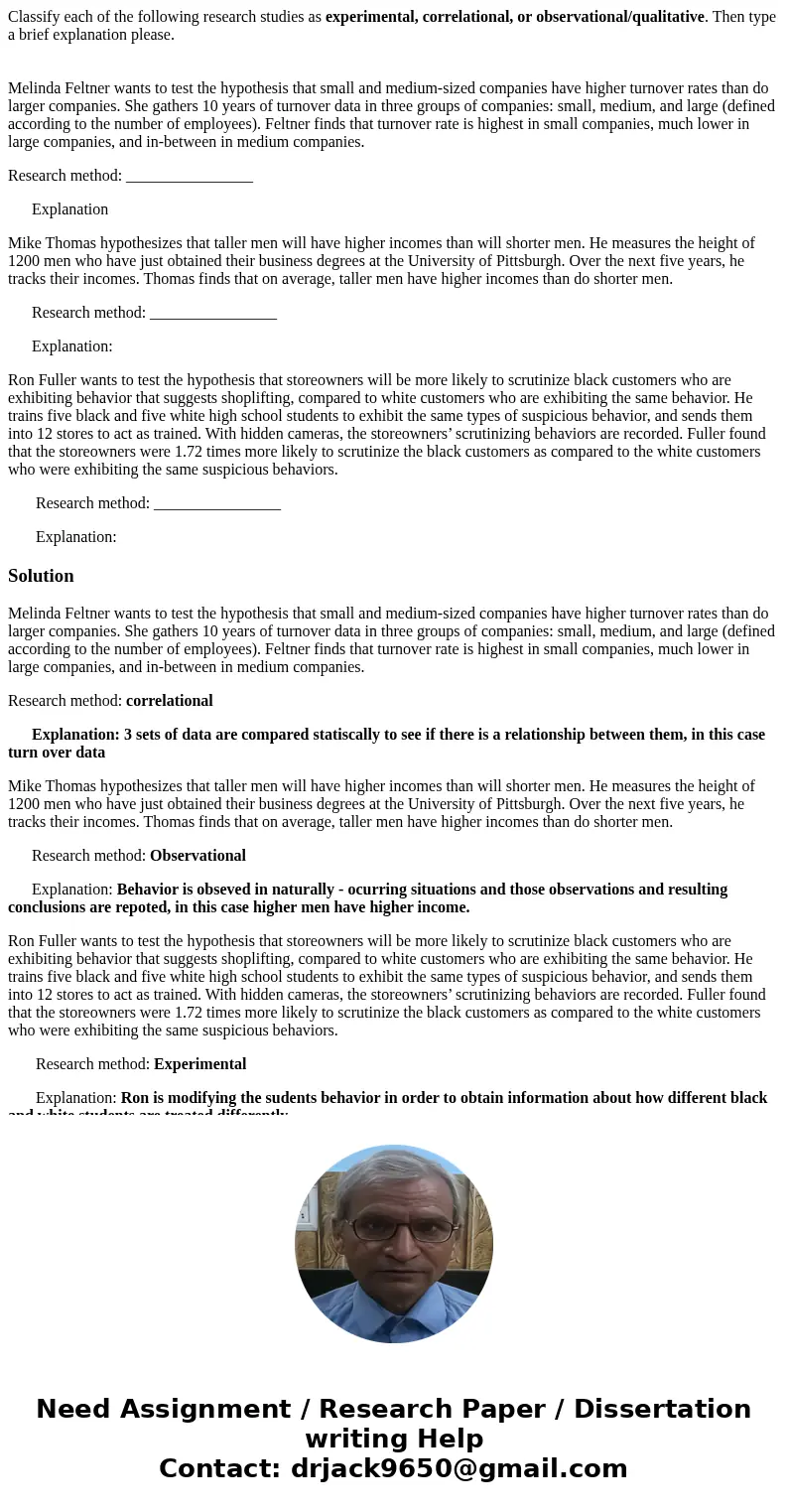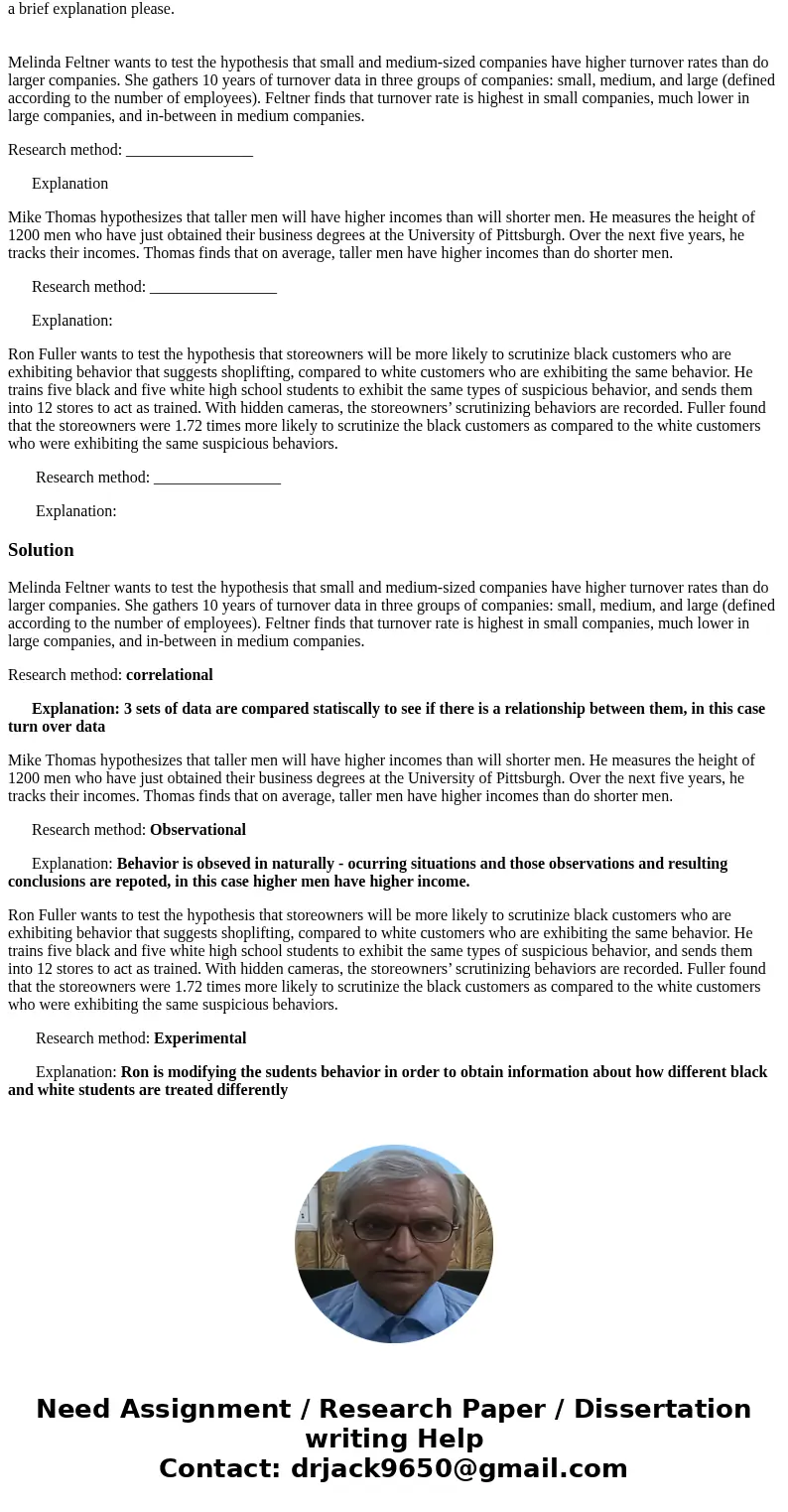Classify each of the following research studies as experimen
Classify each of the following research studies as experimental, correlational, or observational/qualitative. Then type a brief explanation please.
Melinda Feltner wants to test the hypothesis that small and medium-sized companies have higher turnover rates than do larger companies. She gathers 10 years of turnover data in three groups of companies: small, medium, and large (defined according to the number of employees). Feltner finds that turnover rate is highest in small companies, much lower in large companies, and in-between in medium companies.
Research method: ________________
Explanation
Mike Thomas hypothesizes that taller men will have higher incomes than will shorter men. He measures the height of 1200 men who have just obtained their business degrees at the University of Pittsburgh. Over the next five years, he tracks their incomes. Thomas finds that on average, taller men have higher incomes than do shorter men.
Research method: ________________
Explanation:
Ron Fuller wants to test the hypothesis that storeowners will be more likely to scrutinize black customers who are exhibiting behavior that suggests shoplifting, compared to white customers who are exhibiting the same behavior. He trains five black and five white high school students to exhibit the same types of suspicious behavior, and sends them into 12 stores to act as trained. With hidden cameras, the storeowners’ scrutinizing behaviors are recorded. Fuller found that the storeowners were 1.72 times more likely to scrutinize the black customers as compared to the white customers who were exhibiting the same suspicious behaviors.
Research method: ________________
Explanation:
Solution
Melinda Feltner wants to test the hypothesis that small and medium-sized companies have higher turnover rates than do larger companies. She gathers 10 years of turnover data in three groups of companies: small, medium, and large (defined according to the number of employees). Feltner finds that turnover rate is highest in small companies, much lower in large companies, and in-between in medium companies.
Research method: correlational
Explanation: 3 sets of data are compared statiscally to see if there is a relationship between them, in this case turn over data
Mike Thomas hypothesizes that taller men will have higher incomes than will shorter men. He measures the height of 1200 men who have just obtained their business degrees at the University of Pittsburgh. Over the next five years, he tracks their incomes. Thomas finds that on average, taller men have higher incomes than do shorter men.
Research method: Observational
Explanation: Behavior is obseved in naturally - ocurring situations and those observations and resulting conclusions are repoted, in this case higher men have higher income.
Ron Fuller wants to test the hypothesis that storeowners will be more likely to scrutinize black customers who are exhibiting behavior that suggests shoplifting, compared to white customers who are exhibiting the same behavior. He trains five black and five white high school students to exhibit the same types of suspicious behavior, and sends them into 12 stores to act as trained. With hidden cameras, the storeowners’ scrutinizing behaviors are recorded. Fuller found that the storeowners were 1.72 times more likely to scrutinize the black customers as compared to the white customers who were exhibiting the same suspicious behaviors.
Research method: Experimental
Explanation: Ron is modifying the sudents behavior in order to obtain information about how different black and white students are treated differently


 Homework Sourse
Homework Sourse